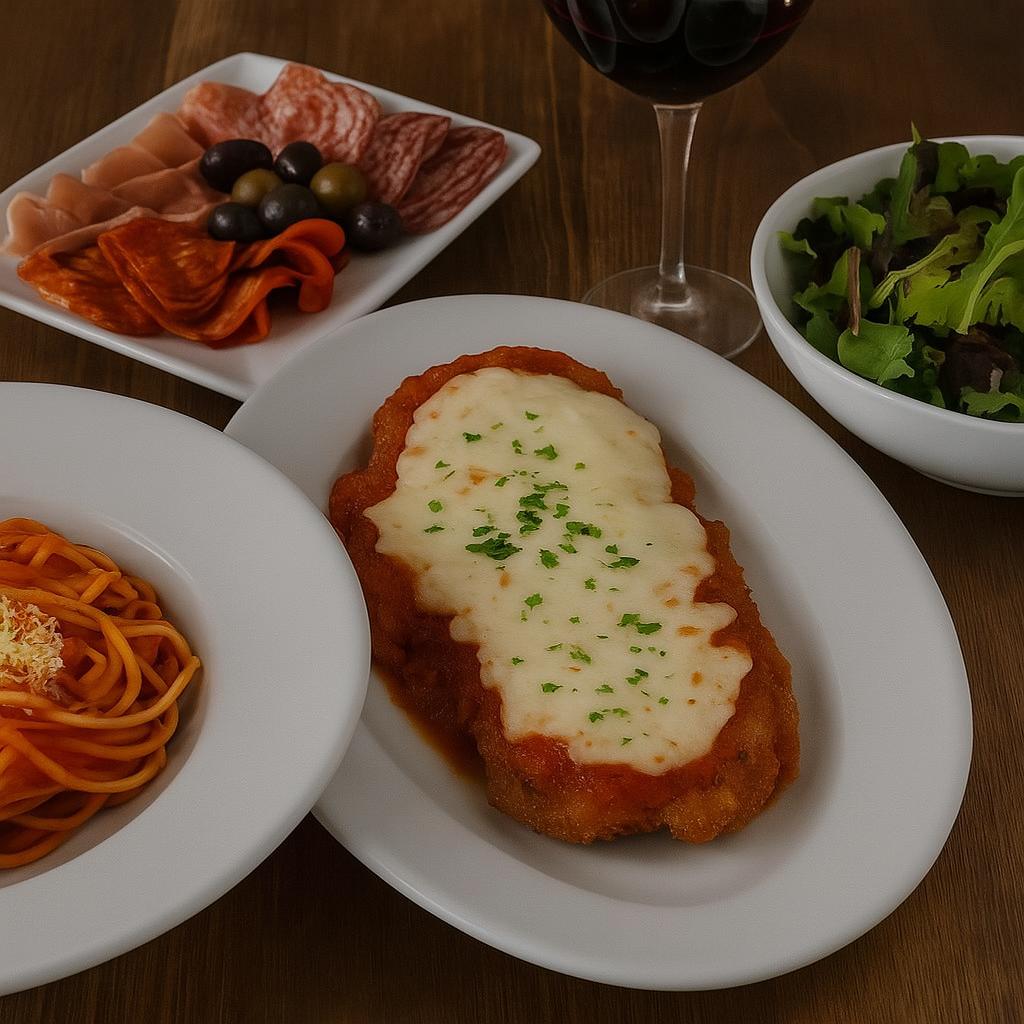There’s something magical about a perfectly plated bowl of pasta, the aroma, the texture, and the balance of flavors all coming together in one satisfying bite. But behind that seemingly effortless perfection lies a deep culinary science: the art of sauce pairing.
In the world of pasta restaurants, expert chefs spend years mastering how to match the right sauce with the right pasta shape, creating dishes where flavor, texture, and tradition harmonize beautifully. From delicate strands of spaghetti to hearty, ridged rigatoni, every choice is intentional and rooted in Italian culinary heritage.
Come with us behind the scenes of pasta restaurants and uncover the secrets of sauce pairing and how chefs elevate the dining experience, one perfectly matched dish at a time.
The Philosophy Behind Perfect Pasta Pairing
In Italy, pasta isn’t just food, it’s culture, identity, and art. Each region has its own traditions and specialties, and pairing pasta with sauce isn’t random; it’s guided by centuries of culinary wisdom.
Chefs in pasta restaurants follow a simple yet powerful philosophy:
“The pasta shape should complement the sauce, not compete with it.”
This means considering three key factors:
- Texture—Smooth sauces cling differently than chunky ones.
- Weight—Heavier sauces need sturdier pasta shapes.
- Surface Area—Ridges, tubes, and folds help hold certain sauces better.
By applying these principles, chefs create dishes where every bite delivers the perfect balance of sauce and pasta.
How Chefs Choose the Right Pasta Shape
Choosing the right pasta shape isn’t just about looks—it’s about how well it carries the sauce. The right pairing can turn a simple dish into something memorable. Here’s how chefs make those decisions.
1. Long, Thin Pastas for Light, Silky Sauces
Pastas like spaghetti, linguine, and fettuccine work beautifully with smooth, delicate sauces that coat each strand evenly. For example:
- Spaghetti + Pomodoro—A classic tomato-based sauce clings lightly to spaghetti’s thin surface.
- Linguine + Pesto—The flat, slightly wider shape picks up just enough basil and olive oil.
- Fettuccine + Alfredo—The ribbon-like texture carries creamy sauces perfectly.
2. Short, Tube-Shaped Pastas for Chunky, Hearty Sauces
When sauces are robust and textured, short, tubular shapes trap the sauce inside for a more flavorful bite:
- Rigatoni + Bolognese—The ridges grip the slow-simmered meat sauce beautifully.
- Penne + Arrabbiata—The hollow tubes catch spicy tomato sauce for bursts of flavor.
- Ziti + Sausage Ragu—A rustic Southern Italian favorite where every piece is coated perfectly.
3. Shaped Pastas for Specialty Sauces
Some pasta shapes are so unique they practically demand specific sauces:
- Orecchiette + Broccoli Rabe—“Little ears” scoop up chunky vegetables and oil-based sauces.
- Farfalle + Cream Sauces—The bowtie folds capture just the right amount of creamy goodness.
- Gnocchi + Gorgonzola—The pillowy texture melts seamlessly into rich, cheesy sauces.
Chefs understand that matching pasta shapes to sauces is not just tradition, it’s about enhancing flavor delivery in every bite.
Regional Influence: Where Tradition Meets Innovation
Italian pasta culture is deeply regional, and pasta restaurants often draw inspiration from specific culinary traditions:
- Rome—Think cacio e pepe with tonnarelli or carbonara with spaghetti.
- Bologna—Famous for tagliatelle al ragù, where flat, wide noodles hold hearty sauces.
- Naples—Known for simple sauces like pomodoro paired with spaghetti or paccheri.
- Sicily—Specializes in seafood pasta dishes, often pairing bucatini or spaghetti with fresh clams and tomatoes.
Expert chefs often respect these regional pairings while adding their own creative twist whether through seasonal ingredients, modern techniques, or global flavor infusions.
The Science of Sauce Consistency
The secret to a perfect pasta dish isn’t just the shape, it’s also the consistency of the sauce. Chefs carefully adjust textures so the pasta and sauce work together instead of separately:
- Oil Based Sauces—Light, glossy sauces like aglio e olio are designed to coat long noodles evenly.
- Cream-Based Sauces—Velvety sauces like Alfredo cling best to flat ribbons or filled pasta.
- Chunky Ragùs—Hearty meat sauces need ridges and curves to hold every bite of richness.
By understanding the chemistry of starches, fats, and liquids, chefs ensure the sauce binds naturally without overpowering the pasta.
Chefs’ Behind-the-Scenes Secrets
Step inside a pasta restaurant kitchen, and you’ll discover some fascinating techniques that elevate pasta-sauce pairings:
- Finishing Pasta in the Sauce—Rather than draining it completely, chefs reserve some pasta water to emulsify sauces, creating silky, restaurant-quality textures.
- Balancing Acidity and Creaminess—Tomato-based sauces often get a splash of butter, while cream sauces are brightened with lemon zest.
- Seasoning in Layers—The best chefs season the pasta water, the sauce, and the final dish for balanced flavor at every step.
These subtle techniques separate true pasta artistry from ordinary cooking.
Why Sauce Pairing Matters for the Dining Experience
A perfectly matched pasta and sauce combination transforms a meal from good to unforgettable. The right pairing ensures:
- Flavor Harmony—Every ingredient complements, not competes.
- Textural Balance—Creamy sauces feel indulgent, chunky sauces deliver satisfying bites.
For pasta lovers, this attention to detail makes every visit to a high-quality pasta restaurant a culinary adventure.
Experience the Art of Pasta at Mama Ricotta’s
At Mama Ricotta’s, we believe pasta should be crafted, not just cooked. Our chefs master the art of pairing house-made pastas with sauces designed to elevate every texture and flavor.
From hand-cut pappardelle with slow-braised short rib ragù to linguine tossed in vibrant pesto Genovese, every dish celebrates Italian culinary traditions with a modern twist.
Whether you’re a fan of creamy, delicate sauces or bold, hearty ragùs, Mama Ricotta’s delivers a pasta experience that’s unforgettable.
Ready to taste pasta perfection?Reserve your table and discover the art of sauce pairing done right.
![$o_logo['title']](https://www.mamaricottas.com/site/wp-content/uploads/2019/07/door_dash.jpg)

